¶ Introduction
A Distance Measuring Equipment (DME) is a radio-transponder which allows knowing the distance from the airplane to a ground station. It measures the time spent by a UHF (Ultra High Frequency) radio signal to make the round trip between beacon and the airplane. More precisely, it measures the slant range, i.e. the hypotenuse of the triangle represented by the altitude of the aircraft and the distance between the radar antenna and the aircraft's ground track.
Whenever a DME is coupled to a VOR or an ILS, it is automatically displayed by the selection of the VOR or ILS frequency. Otherwise, like in TACAN, the DME frequency must be specifically set.
Read more about the Distance Measurement Equipment - DME (Beacon) here !
¶ DME on-board equipment
¶ Frequency selector
The NAV frequency selector is the control unit where pilots select DME frequencies. The DME frequency is usually "paired" with VOR or ILS or localizer (LOC) frequencies. Selection of the appropriate VOR or ILS frequency automatically tunes the DME attached (if existing).
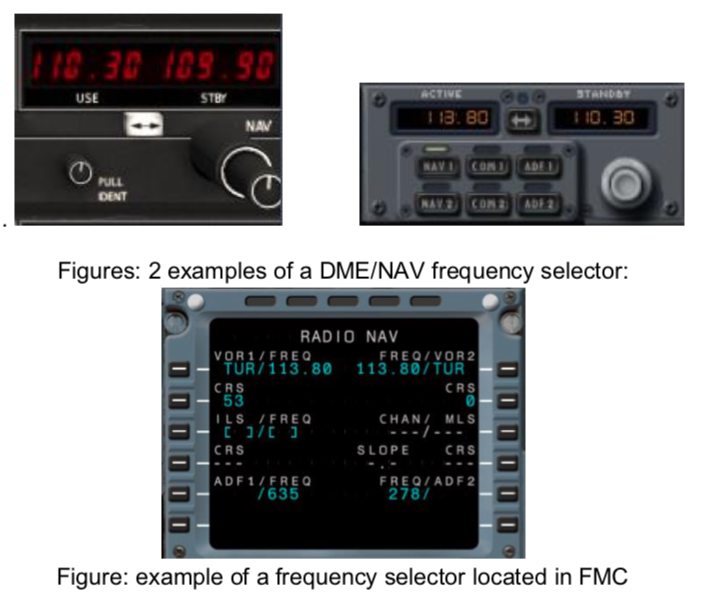
¶ Indicator instruments
There are several types of instruments for receiving a DME:
¶ Standalone instrument
A standalone instrument is an instrument that displays only DME related information. This instrument can be like the example below and can be found on beechcraft propellers for example.
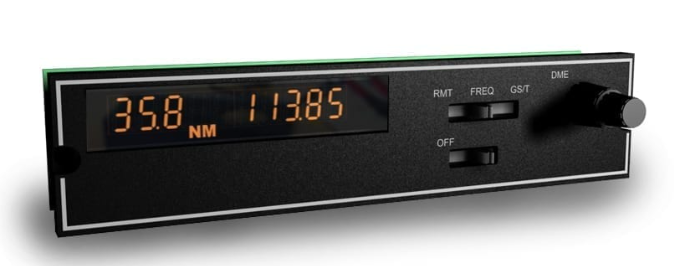
The information displayed are:
- Distance in NM between aircraft and DME station
- Speed of the aircraft in Knots
- Time to reach the station if you navigate direct to the DME station
¶ DME displayed on RMI instrument
In more complex aircraft, like business jet and some airbus, cockpits have dual RMI equipment installed. This equipment is paired with a VOR/NDB remote magnetic indicator, and when a DME station can be found, the distance in NM is displayed at the top of the istrument.
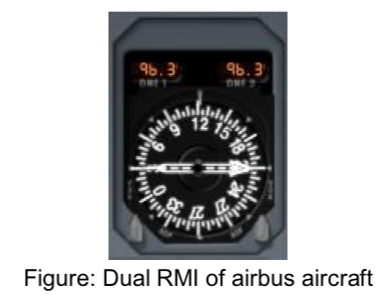
¶ DME displayed on electronic navigation instrument
In many modern jets and propeller aircraft, electronic navigation instruments are usually used. These modern electronic navigation instruments are all-in-one instruments to display:
- VOR and paired DME distance
- ILS and paired DME distance
- NDB
- Navigation fixes
- FMC route
- Traffic (TCAS)
- Weather
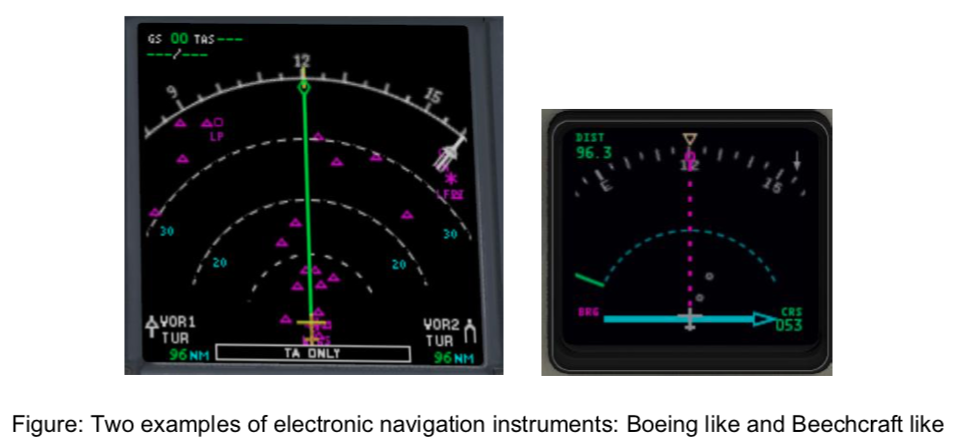
In the following example the DME distance is 0.5 NM from the VOR AN (110.50).
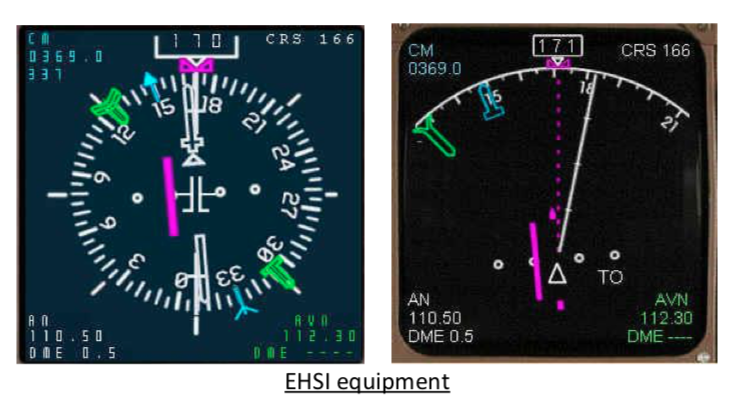
The AVN VOR is not equipped with a DME and the lack of distance information is indicated with '- - - -'
- None
- VID 150259 - Creation
- VID 450012 - Update
- VID 497664 & 496402 - Wiki.js integration